University of the Pacific (United States)
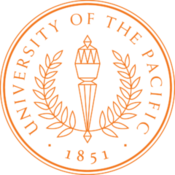 | |
Former names |
College of the Pacific (1911–1961) California Wesleyan College (1851) |
|---|---|
| Type | Private |
| Established |
July 10, 1851 165 years ago |
Religious affiliation |
Non-sectarian Methodist (historically) |
| Endowment | $385.0 million (2015)[1] |
| President | Pamela A. Eibeck |
Administrative staff | 966 |
| Students | 6,128 (2016) |
| Undergraduates | 3,483 (2016)[2] |
| Postgraduates | 1,042 (2016)[2] |
Other students | 1,603 (2016)[2] |
| Location |
Stockton, California (main campus), San Francisco, and Sacramento, California, U.S. |
| Campus | Urban, 175 acres (71 ha) |
| Colors | Orange and Black |
| Athletics | NCAA Division I – WCC |
| Nickname | Tigers |
| Mascot | Powercat |
| Affiliations |
NAICU[3] IAMSCU |
| Website |
www |
 | |
The University of the Pacific (also referred to as Pacific or UOP) is a private university in the western United States, located in Stockton, California. It is the oldest chartered university in California,[4] the first independent co-educational campus in California, and both the first conservatory of music and first medical school on the West Coast.
It was first chartered on July 10, 1851, in Santa Clara, California, under the name California Wesleyan College. The school moved to San Jose in 1871 and then to Stockton 93 years ago in 1923. Pacific is accredited by the Western Association of Schools and Colleges (WASC).[5]
In addition to its liberal arts college, and its schools of education, engineering, business, international studies and music, it has three professional graduate schools: the School of Dentistry in San Francisco, the School of Law in Sacramento, and the school of Pharmacy and Health Sciences located in Stockton.
It has extensive collections pertaining to jazz musician and alumnus Dave Brubeck, who in 1953 released the live album Jazz at the College of the Pacific. It is also home to the papers of environmental pioneer John Muir.[6]
History
Pacific was founded on July 10, 1851, in Santa Clara. It was originally named California Wesleyan College, but one month later, it petitioned to have its name changed to the University of the Pacific.[7] In 1858, the college opened the first medical school on the West Coast; it was called the Medical Department of the University of the Pacific. The medical school was later affiliated with University College under the name Cooper Medical College, and in 1908 it was taken over by Stanford University and became the Stanford University School of Medicine.[8]
In 1871, the campus was moved to San Jose and the college opened its doors to women, becoming the first independent co-educational campus in California.[4][9] In 1878, the Conservatory of Music was established at Pacific, making it the first of its kind west of the Mississippi River.[4][9] In 1896, Napa College merged with the college. In 1911, the name was changed to College of the Pacific (COP or Pacific).
In 1923, the campus relocated from the Bay Area to the city of Stockton[10] becoming the first institution of higher education in the Central Valley; it became the University of the Pacific in 1961.[4]
In 1962, Pacific merged with the San Francisco College of Physicians and Surgeons (established in 1896 in San Francisco), and then in 1966, with the McGeorge School of Law (established in 1924 in Sacramento).[11]
In the late 1960s, when “...federal law about public funding of church-related institutions became an issue...” the university stopped receiving funding from the United Methodist Church, but maintains its affiliation with the church while operating as a non-denominational school.[12]
On October 17, 2013, the university announced an estate gift from Robert and Jeanette Powell of US$125 million. It is the largest gift in the university's 162-year history. In the previous year, Pacific awarded its highest honor, The Order of Pacific, posthumously to both Mr. and Mrs. Powell. ”[13] This gift increased Pacific's endowment to $334 million.[14]
Campus
Stockton Campus

The Stockton Campus, featuring a tower, rose gardens, architectural columns, brick-faced buildings, and numerous[15] trees, was used in Hollywood films, due to its aesthetic likeness to East Coast Ivy League universities: High Time, Raiders of the Lost Ark, Kingdom of the Crystal Skull, The Sure Thing, Dead Man on Campus, and Dreamscape, among others.[16] Part of Disney's 1973 film The World's Greatest Athlete was also shot at Pacific.
The Stockton Campus is home to three main residential halls: Grace Covell Hall, Southwest Hall, and the Quad Buildings. The Quads are composed of several separate smaller residence halls in proximity to each other. Grace Covell is the largest residence hall on campus holding more than 350 students while Southwest and the Quads hold a lower number of students. Upperclassmen can find housing in the University Townhouses on the northwest side of campus, McCaffrey Center Apartments located in the center of campus or in the two apartment buildings known as Monagan and Brookside Hall, which was recently renamed Chan Family Hall. There are also fraternity and sorority houses located on campus.
In 2008, the university opened a new University Center, at a cost of $38 million, to centralize all campus student-centered activities. The Don & Karen DeRosa University Center houses a new central dining hall, student cafe, pub, bookstore and conference centers, replacing the McCaffrey Center. It also built a new $20 million Biological Sciences Center in 2008 that provides advanced classroom and laboratory facilities for students studying the natural sciences and the health sciences.
The campus is home to Morris Chapel, a non-denominational church with simple architecture, excellent acoustics and photogenic backdrops.[17]
Sacramento Campus
Pacific's 13-acre Sacramento Campus houses graduate and professional programs in the Oak Park neighborhood, south of downtown. It consists of 24 buildings, including academic facilities, four residential faciltiies, and a fitness center/pool [18]
The campus is anchored by McGeorge School of Law, which is the only law school approved by the American Bar Association in Sacramento County.
In 2015, Pacific began an expansion of its Sacramento Campus, including new graduate programs in analytics, business, education, health sciences, and public policy.[19]
Programs currently offered at the Sacramento campus[20]:
- Juris Doctor (J.D.)
- Master of Laws (LL.M.)
- Doctor of Juridical Science (J.S.D.)
- Master of Science in Law (M.S.L.)
- Master of Business Administration (MBA)
- Doctor of Education (Ed.D.) in Educational and Organizational Leadership
Programs offered starting in fall 2016[21]:
- Master of Arts in Education (MAEd) in Organizational Learning and Effectiveness
- Master of Public Policy (M.P.P.)
- Master of Public Administration (M.P.A.)
Programs offered starting in spring 2017[21]:
- Master of Science in Analytics
- Bachelor of Science, Organizational Behavior
- Master of Physician Assistant Studies (M.P.A.S.), pending accreditation
San Francisco Campus
Pacific's San Francisco Campus is located in San Francisco's South of Market Pacific neighborhood, containing classrooms, administrative offices, a simulation laboratory and clinics offering dental care to the public. Dugoni School of DentistryThe San Francisco Campus also includes graduate programs in analytics, audiology, food studies, and music therapy.[22]
In 2011, Pacific purchased a seven-story former Wells Fargo office building in the South of Market neighborhood, to use five floors to house Dugoni, while renting two floors as premium office space.[23] Dugoni moved into its new facilities in 2014.[24]
Campus sustainability efforts
The university strives to promote environmental responsibility. Students are given opportunities to take part in sustainability service projects through the M.O.V.E. (Mountains, Ocean, Valley Experience) program. The on-campus dining services participates in the Farm to Fork Program, buying food locally where feasible. In 2009 students from the Residence for Earth & Environmental Living & Learning (a campus residential learning community), the Students for Environmental Action, and the Department of Earth & Environmental Sciences designed and implemented the “Tap That” campaign, whose goal was to inform students, faculty and staff about the effects of disposable water bottles on the environment. Pacific's sustainability score was a D in 2009 and has risen to a C since then.[25][26] The University also has been listed in the Sierra Club's list of "Cool Schools, " or Universities that value sustainability, for three years running.[27] The University also has opened several LEED Certified buildings in the past five years, including the Don and Karen DeRosa University Center, the John T. Chambers Technology Center, and the Vereschagin Alumni House.[28]
Demographics
As of 2016, the Stockton campus had 4,897 students (3,483 undergraduates, 768 graduate, 646 first professional students).[2] The University of the Pacific Arthur A. Dugoni School of Dentistry in San Francisco had 638 students (154 graduate, 484 first professional students), and the McGeorge School of Law in Sacramento had 593 students (120 graduate, 473 first professional students).[2]
| Undergraduate | U.S. Census[29] | |
|---|---|---|
| White American | 24.3% | 65.8% |
| African American | 3.2% | 12.1% |
| Asian / Pacific Islandere | 37.2% | 4.3% |
| Hispanic American | 18.8% | 14.5% |
| Multi-Ethnic | 6.5% | (N/A) |
| Native American | < 1% | 0.9% |
| International student | 6.1% | (N/A) |
| Race/Ethnicity Unknown | 3.7% | (N/A) |
Academics
The university is the only private institution in the United States with fewer than 10,000 students to offer degrees from eight different professional schools,[30] giving it the broad mix of undergraduate and professional education it offers.[30] Pacific offers more than 100 academic programs and more than 60 undergraduate degrees. Numerous graduate degrees are offered, including doctoral degrees in over 15 departments in five schools and colleges.
The university offers degrees programs in nine schools and a graduate program:
- Arthur A. Dugoni School of Dentistry: San Francisco
- Gladys L. Benerd School of Education: Stockton, Sacramento, and San Francisco.
- College of the Pacific: The University's school of arts and sciences (liberal arts), Stockton
- Conservatory of Music: The first conservatory of music on the west coast, Stockton
- Eberhardt School of Business: Stockton and Sacramento[31]
- Thomas J. Long School of Pharmacy and Health Sciences: Stockton
- McGeorge School of Law: Sacramento
- School of Engineering and Computer Science: Stockton
- School of International Studies: Stockton. One of six undergraduate schools of international studies in America. The school offers four Bachelor of Arts in International Relations, Global Studies, International Affairs and Commerce, and Development as well as a minor. The school offers a M.A. in Intercultural Relations.[32]
- The Office of Research and Graduate Studies: Stockton
U.S. Supreme Court Justice Anthony Kennedy, an adjunct professor, teaches at the McGeorge School of Law in Salzburg, Austria, in the university's summer program abroad.[33]
School of International Studies
One of six undergraduate schools of international studies in America and the only school on the west coast. S.I.S. has an interdisciplinary core curriculum taught by anthropologists, political scientists, economists and historians. The school offers multiple B.A. and minor programs, an M.A. in Intercultural Relations as well as an online certificate program in Social Entrepreneurship.
In 2006, the School of International Studies opened The Global Center for Social Entrepreneurship. The center conducts research into and serves as a gathering place for students interested in social entrepreneurship. Unlike most university social entrepreneurship centers, the program has an undergraduate, student-centered approach, incorporating both academic analysis and practical applications in the field.[34]
One of the leading microfinance lenders for Central America, the Katalysis Bootstrap Fund, relocated to the University of Pacific campus in 2006. Pacific is the first U.S. University to have a microfinance center operating on its campus.[35]
Two University of the Pacific graduates have received Skoll Foundation awards for Social Entrepreneurship. In 2005, alumnus Martin Burt received an award for his agricultural education and rural entrepreneurship program, Fundación Paraguaya. In 2006, Sakena Yacoobi was recognized for her foundation Afghan Institute of Learning, which aims to restore education and health programs.[36]
On August 22, 2012, the School of International Studies was folded under the umbrella of the College of the Pacific. It retains its status as a school, but its administrative structure is attached to the College of the Pacific's Dean's office.[37]
Admissions
| 2016 | 2015 | 2014 | 2013 | 2012 | 2011 | |
|---|---|---|---|---|---|---|
| Freshman Applicants | 8,870 | 14,449 | 15,183 | 21,819 | 22,972 | 21,230 |
| Admits | 5,853 | 9,328 | 8,335 | 10,332 | 8,678 | 7,608 |
| % Admitted | 66.0 | 64.6 | 54.9 | 47.4 | 37.8 | 35.8 |
| Enrolled | 726 | 937 | 924 | 958 | 852 | 927 |
| GPA | 3.54 | 3.45 | 3.49 | 3.47 | 3.54 | 3.47 |
| SAT Composite* | 1163 | 1150 | 1173 | 1181 | 1200 | 1177 |
| (*SAT out of 1600) |
Admission to University of the Pacific is rated as "more selective" by U.S. News & World Report.[43]
For fall 2015, Pacific received 15,183 freshmen applications; 8,335 were admitted (64.6%).[44] The average GPA of the enrolled freshmen was 3.45, while the middle 50% range of SAT scores were 490-620 for critical reading, 520-660 for math and 490-630 for writing.[44] The middle 50% range of the ACT Composite score was 22-29.[44]
Rankings
| University rankings | |
|---|---|
| National | |
| Forbes[45] | 316 |
| U.S. News & World Report[46] | 108 |
| Washington Monthly[47] | 229 |
| Global | |
| QS[48] | 701+ |
National rankings
The 2016 U.S. News & World Report ranking of U.S. colleges and universities ranked University of Pacific's undergraduate program tied for 108th in the "national universities" category.[49] Among graduate programs, USN&WR ranked Pharmacy 48th best in the country, Speech-Language Pathology 84th best, and Physical Therapy 99th best.[49]
PayScale
In 2015, PayScale, the online salary information company, ranked Pacific 74th for Highest Paid Graduates in the United States. The aforementioned rankings are for Pacific graduates with an undergraduate degree only (so those with any type of graduate degree are not included in the ranking). According to the PayScale ranking, the average starting salary for a Pacific graduate is $51,500 and the average mid-career salary is $98,300.[50]
Athletics
Pacific had previously competed in the NCAA Division II California Collegiate Athletic Association conference but left in 1950. In 1952, Pacific became a charter member of the California Basketball Association, which soon became the West Coast Athletic Conference (WCAC) and is now the West Coast Conference (WCC). They remained in the WCAC until joining the Pacific Coast Athletic Association, now known as the Big West Conference, in 1969 for football and 1971 for other sports. Pacific dropped football after the 1995 season, and returned to the WCC in 2013.
Facilities include the 2,500-seat Klein Family Field for baseball, the 350-seat Bill Simoni Field for softball, the 6,150-seat Alex G. Spanos Center for basketball and volleyball, Knoles Field for soccer, Hal Nelson Tennis Courts and Chris Kjeldsen Pool for swimming and water polo.
University of the Pacific competes in NCAA Division I athletics as the Pacific Tigers in the West Coast Conference. After over 40 years of being in a conference (the PCAA/Big West) in which they were the only private school ever to have been a member, they returned to a league that is now composed exclusively of private, faith-based schools. (BYU is affiliated with the LDS Church, Pepperdine with the Churches of Christ, and the other seven members are Catholic.) The athletics department sponsors 18 sports: baseball, men's and women's basketball, women's cross country, women's track & field, women's field hockey, men's golf, men's and women's soccer, women's softball, men's and women's swimming, men's and women's tennis, women's volleyball, women's sand volleyball, and men's and women's water polo. The university's two national championships have come in women's volleyball, a sport in which the school advanced to 24 straight NCAA Tournaments (1981–2004) and appeared in nine Final Fours (2 AIAW, 7 NCAA).
Capital improvements
The university undertook a $200 million fund-raising campaign to construct a University Center, Biological Sciences Center, multipurpose gymnasium, a library addition, and the Klein Family Field for baseball. In the summer of 2007, the university announced it had vastly exceeded that goal, having raised a total of $330 million,[51] including a bequest gift of $100 million from Robert C. and Jeannette Powell.
Administration
When Donald DeRosa retired on June 30, 2009 as president of the university, Pamela Eibeck became the university's 24th and first female president.[52]
The president is selected by the university's Board of Regents, consisting of 27 members, including U.S. Ninth Circuit Court of Appeals Judge Connie M. Callahan, U.S. District Court Judge Morrison England, and former NASA Astronaut Jose Hernandez. Former members may be named Emeritus Board Members. This list includes San Diego Chargers owner Alex G. Spanos.
Provost Philip N. Gilbertson served as the chief academic officer from 1996 through June 2010, overseeing all of the university's schools and divisions.[53] He retired on June 30, 2010. The university named Dr. Patrick J. Ferrillo, Jr., dean of the Arthur A. Dugoni School of Dentistry in San Francisco, to fill the position while a search was completed for a permanent replacement. In February 2011, Dr. Maria Pallavicini, the dean of the School of Natural Sciences at UC Merced, was appointed provost.[54] The Council of Deans comprises all academic deans, associate and assistant provosts, the Director of Planning and Research, and the Academic Budget Officer.
In 2006, former Stanford Athletic Director Ted Leland returned to his undergraduate alma mater as Pacific's Vice President of University Advancement and was later appointed as Vice President of External Relations by President Eibeck in 2009. Leland was appointed temporary and then permanent athletics director in 2011 while still assuming the vice presidential duties.[55] In February 2015, Leland stepped down from his post as Vice President of External Relations to focus on athletics. Stacy McAfee was named the new Vice President for External Relations.[56]
In 2013, Pacific appointed Dr. Rena Fraden as the Dean of the College of the Pacific. Fraden was previously Vice-President for Academic Affairs and the G. Keith Funston Professor of English and American Studies at Trinity College (Connecticut).[57]
Greek life
About 16% of students are members of a social fraternity or sorority[58] at University of the Pacific, where there are four on-campus social fraternity houses, four on-campus social sorority houses, and five multicultural fraternities that are overseen by the University's Department of Housing and Greek Life. There are also a variety of professional organizations and fraternities on the three campus.[59]
Fraternities
- Theta Chi—Iota Eta Chapter
- Pi Kappa Alpha—Kappa Nu Chapter
- Sigma Chi—Kappa Sigma Chapter
- Beta Theta Pi—Eta Kappa Chapter
Sororities
- Alpha Phi—Iota Gamma Chapter[60]
- Delta Delta Delta—Phi Rho Chapter[61]
- Delta Gamma—Delta Epsilon Chapter
- Kappa Alpha Theta—Phi Chapter
Multicultural fraternities
- Omega Delta Phi—Alpha Nu Chapter
- Xi Chi Sigma
Multicultural sororities
- Delta Sigma Theta
- Gamma Alpha Omega
- Rho Delta Chi
Professional fraternities
- Alpha Chi Sigma—Chemistry: Beta Pi Chapter
- Delta Epsilon Mu—Pre-Health: Tau Chapter
- Delta Nu Tau—Pre-Dentistry: Alpha Chapter
- Delta Phi Epsilon—Foreign Service: Psi Chapter[62]
- Delta Sigma Pi—Business
- Kappa Delta Epsilon Society—Honors Education Fraternity: Delta Eta Chapter
- Kappa Psi—Pharmacy: Gamma Nu Chapter
- Mu Phi Epsilon—Music: Mu Eta Chapter
- Rho Pi Phi—Pharmacy: Lambda Sigma Delta Chapter
- Omega Eta Epsilon—Language: Alpha Chapter
- Phi Alpha Delta—Legal Fraternity: Engle Chapter
- Phi Delta Chi—Pharmacy: Alpha Psi
- Phi Epsilon Kappa—Health, Exercise, and Sport Sciences: Eta Kappa Chapter
- Phi Mu Alpha Sinfonia—Music: Beta Pi Chapter
- Sigma Alpha Iota—Music: Eta Omega Chapter
- Sigma Gamma Epsilon—Earth Sciences: Eta Upsilon Chapter
- Theta Alpha Phi
- Theta Tau—Engineering: Lambda Delta Chapter
- Lambda Kappa Sigma—Pharmacy: Alpha Xi
Service fraternities
Honor societies
- Alpha Lambda Delta
- Beta Alpha Psi
- Beta Beta Beta
- Mortar Board
- Omicron Delta Epsilon
- Phi Alpha Theta
- Phi Beta Kappa
- Phi Delta Phi (Law)
- Phi Kappa Phi
- Phi Sigma Tau
- Pi Kappa Lambda
- Rho Chi
- Sigma Delta Pi
- Sigma Tau Delta
- Tau Beta Pi
Notable alumni
-
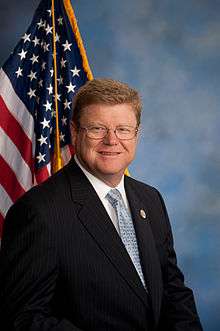
Mark Amodei, JD 1983, U.S. Representative for Nevada's second congressional district (2011 – present)
-
Frank W. Benson, A.B. 1877, A.M. 1882, 12th Governor Oregon (1909–1910)
-
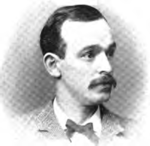
Henry L. Benson, BA 1873, 44th Associate Justice of the Oregon Supreme Court (1915–1921)
-

Scott Boras, PharmD 1977, JD 1982, American sports agent specializing in baseball
-
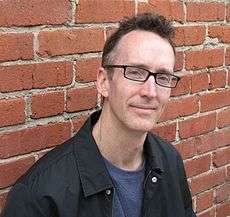
S. G. Browne, BS 1989, American author of dark comedy and social satire
-

Dean Butler, BA 1979, Television actor and producer
-

Pete Carroll, BS 1973, Super Bowl – winning head coach of the Seattle Seahawks, former head coach of the New York Jets, New England Patriots, and the USC Trojans
-
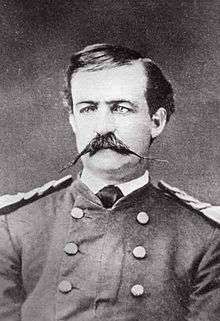
Gustavus Cheyney Doane, BA 1857, U.S. Army, member of Washburn-Langford-Doane Expedition to Yellowstone in 1870
-
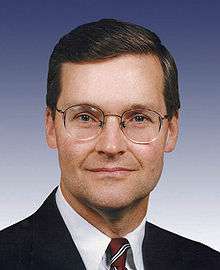
John Doolittle, JD 1978, U.S. Representative from California (1991–2009)
-
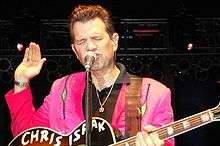
Chris Isaak, BA 1981, American rock musician and occasional actor
-

Joseph R. Knowland, BA 1895, U.S. Representative from California (1904–1915)
-
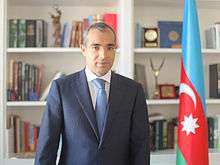
Mikayil Jabbarov, LLM 1998, Minister of Education of the Azerbaijan Republic (2013 – present)
-

George Moscone, BA 1953, 37th mayor of San Francisco (1976–1978)
-
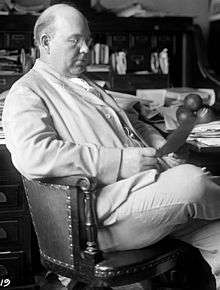
James C. Needham, BA 1886, U.S. Representative from California (1899–1913)
-

Joseph Widney, MA 1865, 2nd President of the University of Southern California (1891–1895), co-founder of the Church of the Nazarene
-

Jose M. Hernandez, BS 1984, NASA astronaut (2004 - 2009)
Additional notable alumni include:
- Tom Flores, Super Bowl-winning head coach
- Alex Spanos, billionaire owner of the San Diego Chargers
See also
References
- ↑ As of June 30, 2015. "U.S. and Canadian Institutions Listed by Fiscal Year (FY) 2015 Endowment Market Value and Change in Endowment Market Value from FY 2014 to FY 2015" (PDF). National Association of College and University Business Officers and Commonfund Institute. 2016.
- 1 2 3 4 5 6 7 "Fast Facts 2016". University of the Pacific Institutional Research.
- ↑ NAICU – Member Directory
- 1 2 3 4 "Key Dates in Pacific's History". University of the Pacific. Retrieved September 30, 2007.
- ↑ WASC Institutions, wascsenior.org/institutions/university-pacific, Retrieved March 30, 2014
- ↑ Welcome to the University Library. Library.pacific.edu. Retrieved on 2013–07–17.
- ↑ "Pacific's Mission". University of the Pacific. Retrieved October 13, 2016.
- ↑ Wilson, John Long (1998). "Stanford University School of Medicine and the Predecessor Schools: An Historical Perspective". Lane Medical Library. Stanford University. Retrieved 17 October 2013.
- 1 2 "Pioneering Firsts". University of the Pacific. Retrieved June 21, 2010.
- ↑ Archived September 27, 2011, at the Wayback Machine.
- ↑ "In The Beginning". University of the Pacific. Retrieved September 30, 2007.
- ↑ "General Questions/Is Pacific a religious or church-related university?". University of the Pacific. Retrieved 20 September 2016.
- ↑ "University of the Pacific receives $125 million gift". University of the Pacific. Retrieved October 18, 2013.
- ↑ http://www.pacific.edu/About-Pacific/AdministrationOffices/Business-and-Finance-Division/About/Treasury-Management/Treasury-and-Investments/Investments.html
- ↑ "Beautiful Campus Environment". University of the Pacific. Retrieved June 21, 2010.
- ↑ "Hollywood at Pacific". University of the Pacific. Retrieved June 21, 2010.
- ↑ "Morris Chapel". University of the Pacific. Retrieved 2007-09-30.
- ↑ "About McGeorge". University of the Pacific. Retrieved January 21, 2012.
- ↑ "University of the Pacific to launch five new graduate programs in Sacramento". Retrieved 2015-07-03.
- ↑ http://www.bizjournals.com/sacramento/news/2016/02/22/uop-launches-new-graduate-programs-in-sacramento.html?ana=fbk
- 1 2 http://www.bizjournals.com/sacramento/news/2016/02/22/uop-launches-new-graduate-programs-in-sacramento.html?ana=fbk
- ↑ "Pacific announces new Sacramento degrees: Expansion is milestone in region's higher education".
- ↑ "University of the Pacific Purchases Building for New Campus in San Francisco's South of Market Neighborhood". University of the Pacific. Retrieved January 21, 2012.
- ↑ "University Of The Pacific Opens State-Of-The-Art School Of Dentistry In SF SoMa".
- ↑ "The College Sustainability Report Card". University of the Pacific. Retrieved 2010-12-10.
- ↑ "Sustainability at Pacific". University of the Pacific. Retrieved 2009-06-05.
- ↑ "Complete Rankings of Cool Schools". The Sierra Club. Retrieved September 2012. Check date values in:
|access-date=(help) - ↑ "John T. Chambers Technology Center is Certified LEED Gold". University of the Pacific. Retrieved October 1, 2011.
- ↑ See Demographics of the United States for references.
- 1 2 "A Broad Selection of Courses". University of the Pacific. Retrieved 2010-04-25.
- ↑ http://www.pacific.edu/business
- ↑ "School of International Studies". University of the Pacific. Retrieved 2010-06-26.
- ↑ Mark Sherman. "Liberal group: Pro-business tilt on Roberts court". Anchorage Daily News. Retrieved 2010-06-26.
- ↑ "Global Center for Social Entrepreneurship". University of the Pacific. Retrieved 2010-06-26.
- ↑ "School of International Studies". University of the Pacific. Archived from the original on February 5, 2009. Retrieved 2010-04-26.
- ↑ "School of International Studies" (PDF). University of the Pacific.
- ↑ "Provost announcement on School of International Studies". University of the Pacific. Retrieved 2012-08-22.
- ↑ "Fast Facts 2015". University of the Pacific Institutional Research.
- ↑ "Fast Facts 2014". University of the Pacific Institutional Research.
- ↑ "Fast Facts 2013". University of the Pacific Institutional Research.
- ↑ "Fast Facts 2012". University of the Pacific Institutional Research.
- ↑ "Fast Facts 2011". University of the Pacific Institutional Research.
- ↑ "University of the Pacific". U.S. News & World Report. 2017.
- 1 2 3 "Common Data Set 2015-2016" (PDF). University of the Pacific.
- ↑ "America's Top Colleges". Forbes. July 5, 2016.
- ↑ "Best Colleges 2017: National Universities Rankings". U.S. News & World Report. September 12, 2016.
- ↑ "2016 Rankings - National Universities". Washington Monthly. Retrieved September 6, 2016.
- ↑ "QS World University Rankings® 2016/17". Quacquarelli Symonds Limited. 2016. Retrieved September 6, 2016.
- 1 2 "University of the Pacific - Overall Rankings". U.S. News & World Report. Retrieved September 21, 2015.
- ↑ "2014-2015 PayScale College Salary Report". PayScale. Retrieved June 6, 2015.
- ↑ "Investing in Excellence". University of the Pacific. June 21, 2008. Retrieved 2007-10-18.
- ↑ http://www.recordnet.com/article/20090227/A_NEWS/902270326
- ↑ "Philip N. Gilbertson". University of the Pacific. Archived from the original on May 27, 2010. Retrieved June 21, 2010.
- ↑ "UC Merced Dean Maria Pallavicini Headed to UOP". Merced Sun Star. November 3, 2010.
- ↑ "UOP athletic director King reassigned; Leland moves into post". Recordnet.com. April 27, 2011.
- ↑ http://stockton-central.news10.net/news/news/426923-university-pacific-names-new-vice-president-external-relations
- ↑ Phillips, Roger. "Pacific hires new college dean". The Record. Retrieved 22 January 2013.
- ↑ "University Fast Facts". University of the Pacific. Retrieved June 21, 2010.
- ↑ "Clubs & Organizations by Affiliation". University of the Pacific. Retrieved June 21, 2010.
- ↑ Iota Gamma Website
- ↑ Phi Rho Chapter
- ↑ http://www.dpepacific.org/
External links
Coordinates: 37°58′44″N 121°18′47″W / 37.979°N 121.313°W
